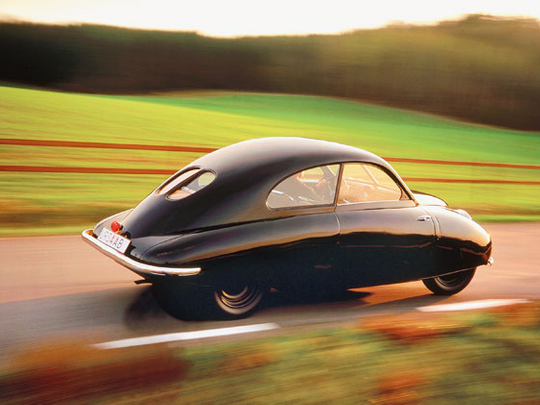
The Saab story goes back a decade before the 1946 UrSaab, but we'll have to start it here as this model is the first four-wheeled vehicle to wear this Swedish manufacturer's badge.
Impossibly ahead of its time, the UrSaab (Ur is Swedish for original) had unmatched aerodynamics, which meant its 692cc two-cylinder got along just fine.
But the brand remained quite idiosyncratic, as you can surely imagine looking at the UrSaab. Its shapely panels were hand beaten by Swedish artisans on a wooden buck placed on some horse manure (really) in order to get the right ‘feel'.
It wasn't until the Saab 99 Turbo that the carmaker became a household name, as this was one of the first European mainstream turbocharged cars, since the Americans already popularised (kind of) the technology across the pond.
Launched as a 1978 model, the 99 Turbo made 145bhp from its 2.0-litre, four-cylinder engine, and Saab claimed that had engineers opted for an equally powerful six-cylinder at the time, the weight disadvantage would've been an extra 50kg, with 30 per cent more fuel consumption. Saab's perfect timing during the Seventies fuel crisis was enough to make the 99 a bit of a legend.
Not only was Saab breaking ground with its turbocharging, but the company also started using a wastegate to control boost pressure, as opposed to other manufacturers like GM, BMW and Porsche who were also dabbling with turbos.
And to make sure the Turbo was ahead of its time, Saab even included front and rear crumple zones. They figured safety was paramount as drivers got used to the new-fangled idea of the typical on-boost loss of control. At the time some frowned at the 99 Turbo's lack of response, but the massive turbo lag was a major part of the car's loveable character.
Saab did more Turbos and even improved on the idea with the 900 Turbo, the 99's successor, but it's gone downhill since then. For two decades, we haven't had a great driver's Saab, but at least the 99 Turbo hit the big time from scratch and cemented its status as a motoring icon.
Long live boost!











